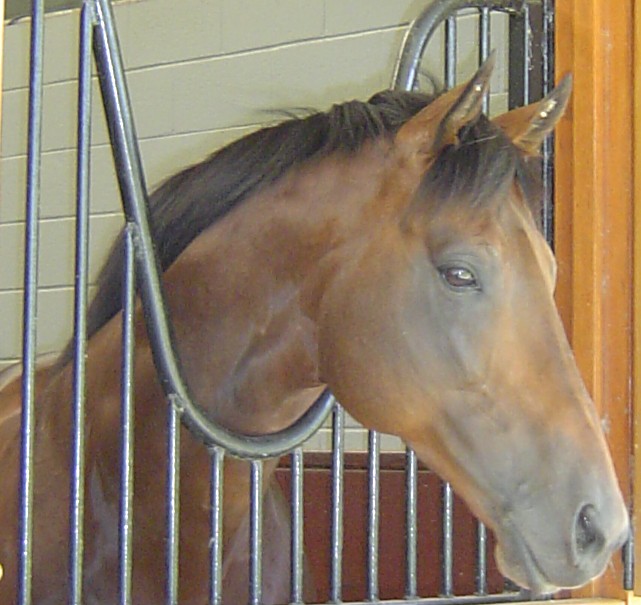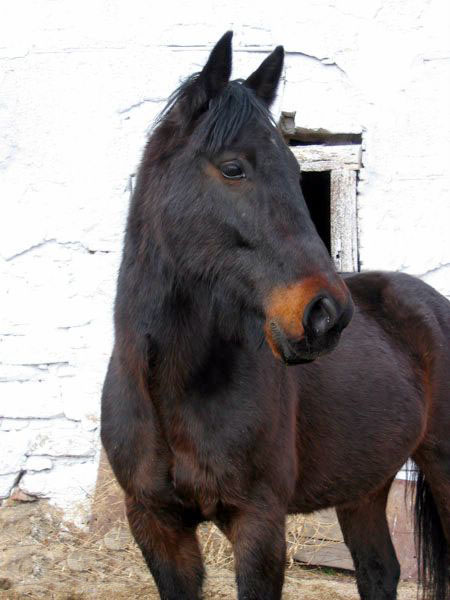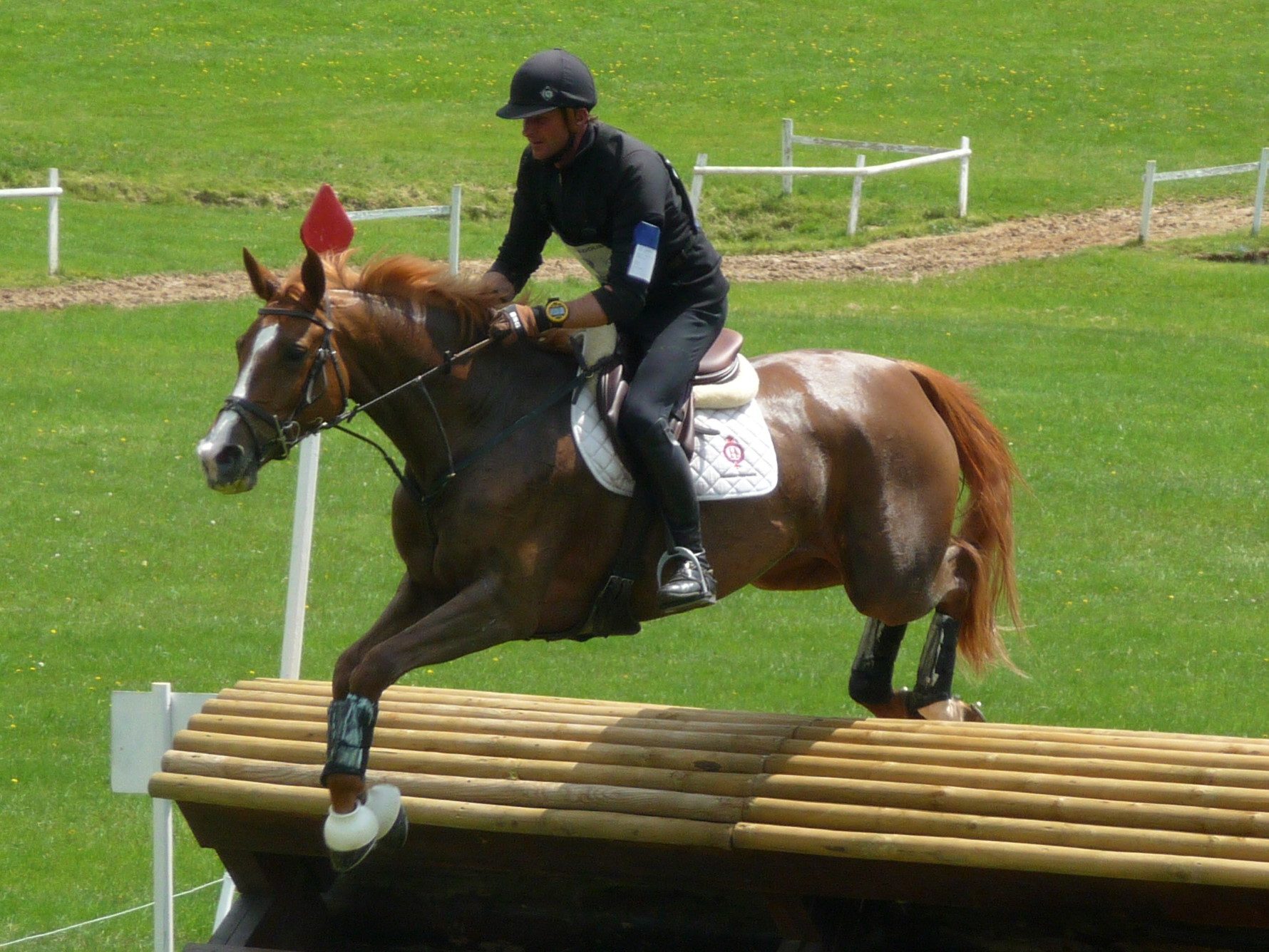|
Thoroughbred
The Thoroughbred is a horse breed best known for its use in horse racing. Although the word ''thoroughbred'' is sometimes used to refer to any breed of purebred horse, it technically refers only to the Thoroughbred breed. Thoroughbreds are considered " hot-blooded" horses that are known for their agility, speed, and spirit. The Thoroughbred, as it is known today, was developed in 17th- and 18th-century England, when native mares were crossbred with imported Oriental stallions of Arabian, Barb, and Turkoman breeding. All modern Thoroughbreds can trace their pedigrees to three stallions originally imported into England in the 17th and 18th centuries, and to a larger number of foundation mares of mostly English breeding. During the 18th and 19th centuries, the Thoroughbred breed spread throughout the world; they were imported into North America starting in 1730 and into Australia, Europe, Japan and South America during the 19th century. Millions of Thoroughbreds exist tod ... [...More Info...] [...Related Items...] OR: [Wikipedia] [Google] [Baidu] |
Racehorse Injuries
Racehorse injuries and fatalities are a side effect of training and competition. The problem with equine injuries is that they so often result in death. A 2005 study by the United States Department of Agriculture found that injuries are the second leading cause of death in horses, second only to old age. Nureyev's recovery from a broken leg while retired at stud in 1987 typifies the struggle horses have after being injured. Two years after Secretariat's recordbreaking US Triple Crown took the sport in the United States to a new level of popularity, the breakdown and death of Ruffian brought on a new era of safety concerns. Racehorses had been breaking down for centuries, but never before in an event so widely seen as the great match race between Ruffian and Foolish Pleasure at Belmont Park with 18 million viewers. The horse racing industry has been trying to adapt to the increased safety concerns ever since. "I personally think that in a very real way, we're almost held to ... [...More Info...] [...Related Items...] OR: [Wikipedia] [Google] [Baidu] |
American Quarter Horse
The American Quarter Horse, or Quarter Horse, is an American breed of horse that excels at sprinting short distances. Its name is derived from its ability to outrun other horse breeds in races of a quarter mile or less; some have been clocked at speeds up to 44 mph (70.8 km/h). The development of the Quarter Horse traces to the 1600s. The American Quarter Horse is the most popular breed in the United States today, and the American Quarter Horse Association is the largest breed registry in the world, with almost three million living American Quarter Horses registered in 2014. The American Quarter Horse is well known both as a race horse and for its performance in rodeos, horse shows, and as a working ranch horse. The compact body of the American Quarter Horse is well suited for the intricate and quick maneuvers required in reining, cutting, working cow horse, barrel racing, calf roping, and other western riding events, especially those involving live cattle. The ... [...More Info...] [...Related Items...] OR: [Wikipedia] [Google] [Baidu] |
Arabian Horse
The Arabian or Arab horse ( ar, الحصان العربي , DMG ''ḥiṣān ʿarabī'') is a breed of horse that originated on the Arabian Peninsula. With a distinctive head shape and high tail carriage, the Arabian is one of the most easily recognizable horse breeds in the world. It is also one of the oldest breeds, with archaeological evidence of horses in the Middle East that resemble modern Arabians dating back 4,500 years. Throughout history, Arabian horses have spread around the world by both war and trade, used to improve other breeds by adding speed, refinement, endurance, and strong bone. Today, Arabian bloodlines are found in almost every modern breed of riding horse. The Arabian developed in a desert climate and was prized by the nomadic Bedouin people, often being brought inside the family tent for shelter and protection from theft. Selective breeding for traits, including an ability to form a cooperative relationship with humans, created a horse breed that ... [...More Info...] [...Related Items...] OR: [Wikipedia] [Google] [Baidu] |
Horse
The horse (''Equus ferus caballus'') is a domesticated, one-toed, hoofed mammal. It belongs to the taxonomic family Equidae and is one of two extant subspecies of ''Equus ferus''. The horse has evolved over the past 45 to 55 million years from a small multi-toed creature, '' Eohippus'', into the large, single-toed animal of today. Humans began domesticating horses around 4000 BCE, and their domestication is believed to have been widespread by 3000 BCE. Horses in the subspecies ''caballus'' are domesticated, although some domesticated populations live in the wild as feral horses. These feral populations are not true wild horses, as this term is used to describe horses that have never been domesticated. There is an extensive, specialized vocabulary used to describe equine-related concepts, covering everything from anatomy to life stages, size, colors, markings, breeds, locomotion, and behavior. Horses are adapted to run, allowing them to quickly escape predators ... [...More Info...] [...Related Items...] OR: [Wikipedia] [Google] [Baidu] |
Exercise Induced Pulmonary Hemorrhage
Exercise-induced pulmonary hemorrhage (EIPH), also known as "bleeding" or a "bleeding attack", refers to the presence of blood in the airways of the lung in association with exercise. EIPH is common in horses undertaking intense exercise, but it has also been reported in human athletes, racing camels and racing greyhounds. Horses that experience EIPH may also be referred to as "bleeders" or as having "broken a blood vessel". In the majority of cases, EIPH is not apparent unless an endoscopic examination of the airways is performed following exercise. This is distinguished from other forms of bleeding from the nostrils, called epistaxis. Epidemiology EIPH often occurs in horses that race at high speeds, with the number of affected race horses increasing in proportion to the speed and intensity of the exercise. It may occur in racing Thoroughbreds (flat racing, steeplechasing or jump racing), American Quarter Horses (incidence of 50–75%), Standardbreds (incidence of 40–6 ... [...More Info...] [...Related Items...] OR: [Wikipedia] [Google] [Baidu] |
Thoroughbred Racing
Thoroughbred racing is a sport and industry involving the racing of Thoroughbred horses. It is governed by different national bodies. There are two forms of the sport – flat racing and jump racing, the latter known as National Hunt racing in the UK and steeplechasing in the US. Jump racing can be further divided into hurdling and steeplechasing. Ownership and training of racehorses Traditionally, racehorses have been owned by wealthy individuals. It has become increasingly common in the last few decades for horses to be owned by syndicates or partnerships. Notable examples include the 2005 Epsom Derby winner Motivator, owned by the Royal Ascot Racing Club, 2003 Kentucky Derby winner Funny Cide, owned by a group of 10 partners organized as Sackatoga Stable, and 2008 Kentucky Derby winner Big Brown, owned by IEAH stables, a horse racing hedgefund organization. Historically, most race horses have been bred and raced by their owners. Beginning after World War II, the commerci ... [...More Info...] [...Related Items...] OR: [Wikipedia] [Google] [Baidu] |
Eventing
Eventing (also known as three day eventing or horse trials) is an equestrian event where a single horse and rider combine and compete against other competitors across the three disciplines of dressage, cross-country, and show jumping. This event has its roots in a comprehensive cavalry test that required mastery of several types of riding. The competition may be run as a one-day event (ODE), where all three events are completed in one day (dressage, followed by show jumping and then the cross-country phase) or a three-day event (3DE), which is more commonly now run over four days, with dressage on the first two days, followed by cross-country the next day and then show jumping in reverse order on the final day. Eventing was previously known as Combined Training, and the name persists in many smaller organizations. The term "Combined Training" is sometimes confused with the term "Combined Test", which refers to a combination of just two of the phases, most commonly dressage an ... [...More Info...] [...Related Items...] OR: [Wikipedia] [Google] [Baidu] |
Fox Hunting
Fox hunting is an activity involving the tracking, chase and, if caught, the killing of a fox, traditionally a red fox, by trained foxhounds or other scent hounds. A group of unarmed followers, led by a "master of foxhounds" (or "master of hounds"), follow the hounds on foot or on horseback. In Australia, the term also refers to the hunting of foxes with firearms, similar to deer hunting. Fox hunting with hounds, as a formalised activity, originated in England in the sixteenth century, in a form very similar to that practised until February 2005, when a law banning the activity in England and Wales came into force. A ban on hunting in Scotland had been passed in 2002, but it continues to be within the law in Northern Ireland and several other areas, including Australia, Canada, France, the Republic of Ireland and the United States. The sport is controversial, particularly in the United Kingdom. Proponents of fox hunting view it as an important part of rural culture, ... [...More Info...] [...Related Items...] OR: [Wikipedia] [Google] [Baidu] |
Roan (horse)
Roan is a horse coat color pattern characterized by an even mixture of colored and white hairs on the body, while the head and "points"—lower legs, mane, and tail—are mostly solid-colored. Horses with roan coats have white hairs evenly intermingled throughout any other color. The head, legs, mane, and tail have fewer scattered white hairs or none at all. The roan pattern is dominantly inherited, and is found in many horse breeds. While the specific mutation responsible for roan has not been exactly identified, a DNA test can determine zygosity for roan in several breeds. True roan is always present at birth, though it may be hard to see until after the foal coat sheds out. The coat may lighten or darken from winter to summer, but unlike the gray coat color, which also begins with intermixed white and colored hairs, roans do not become progressively lighter in color as they age. The silvering effect of mixed white and colored hairs can create coats that look bluish ... [...More Info...] [...Related Items...] OR: [Wikipedia] [Google] [Baidu] |
Seal Brown (horse)
Seal brown is a hair coat color of horses characterized by a near-black body color; with black points, the mane, tail and legs; but also reddish or tan areas around the eyes, muzzle, behind the elbow and in front of the stifle. The term is not to be confused with "brown", which is used by some breed registries to refer to either a seal brown horse or to a dark bay without the additional characteristics of seal brown. Like bay, the seal brown color lacks the non-agouti mutation that would create a fully black horse. The genetics behind seal brown are not known, but some think it is caused by an allele of agouti called ''At''. A DNA test said to detect the seal brown (At) allele was developed, but the test was never subjected to peer review and due to unreliable results was subsequently pulled from the market. The similar dark bay coat color, which also features black points and a dark body, differs from seal brown by the absence of tan markings. Another mimic is the liver c ... [...More Info...] [...Related Items...] OR: [Wikipedia] [Google] [Baidu] |
Anglo-Arabian
The Anglo-Arabian or Anglo-Arab is a crossbred, part-Arabian horse that now also has its own status as a horse breed. It is the result of a Thoroughbred (hence, the prefix "Anglo") being crossed with an Arabian. The cross can be made between a Thoroughbred stallion and an Arabian mare, or vice versa. It can also be a cross between either an Anglo-Arab and a Thoroughbred or, alternatively, an Anglo-Arab and an Arabian. Another permitted cross is between two Anglo-Arabians. No matter the cross, a horse must have a minimum 12.5% of Arabian blood to be considered an Anglo-Arabian. France is one of the greatest producers of Anglo-Arabians. The French Anglo-Arab traces back to two stallions: the Arabian stud Massoud and Aslam, a "Turkish" horse, probably of the now-extinct Turkoman or "Turkmene" breed. These Syrian imports were then crossed with a trio of Thoroughbreds, specifically, the Comus Mare, the Selim Mare, and Daer. Some years later, three of their daughters — C ... [...More Info...] [...Related Items...] OR: [Wikipedia] [Google] [Baidu] |
Rock Of Gibraltar - Race Horse
Rock most often refers to: * Rock (geology), a naturally occurring solid aggregate of minerals or mineraloids * Rock music, a genre of popular music Rock or Rocks may also refer to: Places United Kingdom * Rock, Caerphilly, a location in Wales * Rock, Cornwall, a village in England * Rock, County Tyrone, a village in Northern Ireland * Rock, Devon, a location in England * Rock, Neath Port Talbot, a location in Wales * Rock, Northumberland, a village in England * Rock, Somerset, a location in Wales * Rock, West Sussex, a hamlet in Washington, England * Rock, Worcestershire, a village and civil parish in England United States * Rock, Kansas, an unincorporated community * Rock, Michigan, an unincorporated community * Rock, West Virginia, an unincorporated community * Rock, Rock County, Wisconsin, a town in southern Wisconsin * Rock, Wood County, Wisconsin, a town in central Wisconsin Elsewhere * Corregidor, an island in the Philippines also known as "The Rock" * Jama ... [...More Info...] [...Related Items...] OR: [Wikipedia] [Google] [Baidu] |









